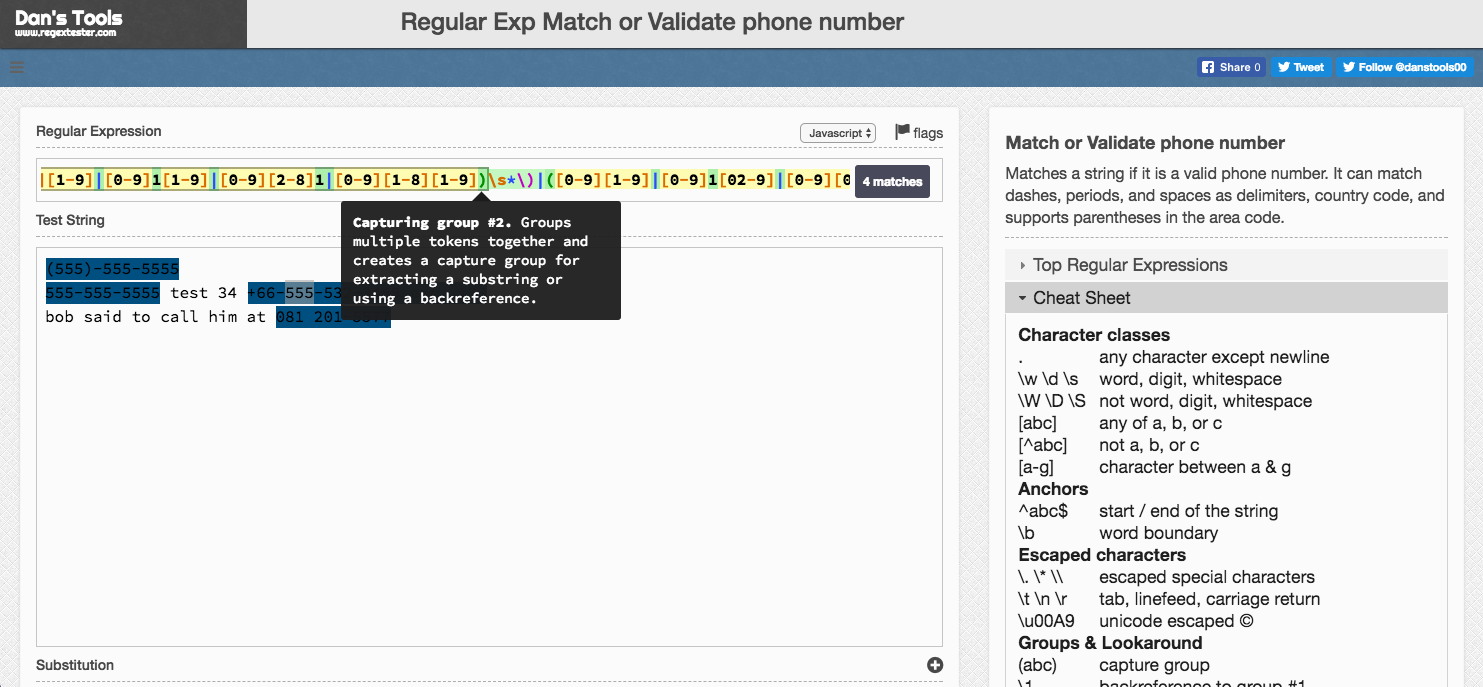
I'm going to go off and read a book on regex now (and watch some videos), as they have finally "clicked" for me and I now have that seed which is spurring me on to learn more. There's probably much better ways to do this, but this is the result of my exploration so far. $Input -match "^#$%^()\\-')įair enough, that may still look a little complex if you're new to regex but I hope that having built it up step by step it can be deciphered.Īlso, if you're a regex guru be gentle. I would then blindly drop that into my script. It validates that the phone number is in one of these formats: (123) 456-7890 or 12.

#PHONE NUMBER REGEX CODE#
I'd head off to Google and search for " NetBIOS name regex" and likely end up grabbing something from the first Stack Overflow result. I found this code in some website, and it works perfectly. The best I'd managed in the past was to Google a pattern that matched what I was looking for and stole re-purposed them in my scripts without much understanding of how or why it actually worked.įor example, let's say I was trying to ensure that input was a valid NetBIOS name. I've seen these expressions used by (scripting) wizard to do amazing things, but I have never been able to wrap my head around them. Syntax of RegEx in JavaScript const regEx = /pattern/ Ĭonst inputText = document.getElementById("phoneNumber").For the longest time, Regex has been similar to black magic in my mind. ) matches each character, including the new line. Since every search in RegEx is discrete, this indicator has no further effect on the displayed results. The expression only matches its lastIndex position and ignores the global flag (g) if it is set.

Users can use extended Unicode escapes of the form \ x by activating this flag. When the multi-line flag is on, the start and end anchors ( ^ and $) match the beginning and end of a line, not the beginning and end of the entire chain. Without the global flag, subsequent searches will return the same match.


There are two ways to construct the regular expression, use a literal regular expression and call the constructor function of the RegExp object. The next element is the national destination code (NDC), such as 7911. These patterns are used with the matchAll(), match(), replaceAll(), replace(), search(), and split(). JavaScript also supports regular expressions as an object. Regular expressions are like a search tool that can find specific patterns in strings.
#PHONE NUMBER REGEX HOW TO#
In this post, we’re going to learn how to write regular expressions for phone numbers in JavaScript. Each country has its own number format, and before we store this data in the database, we need to make sure that the user is entering the correct number format.


 0 kommentar(er)
0 kommentar(er)
